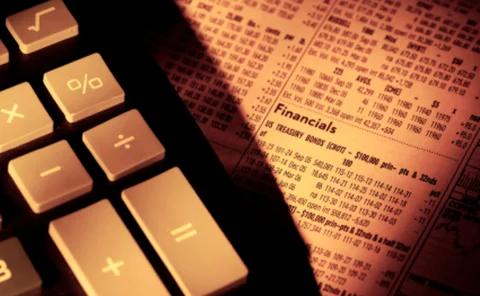Equity markets
Surviving skew
Skew skyrocketed in May, breaking through levels last reached in 2008 after the bankruptcy of Lehman Brothers, while volatility and correlation also spiked. The dislocations are rumoured to have caused losses for some exotic equity books. How did dealers…
The value of a variance swap – a question of interest
Pricing equity variance swaps is well understood in the case of deterministic interest rates, but particularly for longer-dated swaps the stochastic nature of the rate cannot be ignored. Here, Per Hörfelt and Olaf Torné derive the fair strike when both…
Vol and correlation cause equity derivatives pain
Hedge funds and dealers reported to suffer losses from recent equity derivatives moves
Return to variance?
Banks and investors were hammered on short single-stock variance positions during the crisis, causing many dealers to pull back from the variance swap market altogether. Instead, some have been pushing volatility swaps as an alternative, but not everyone…
Dividend rout blamed on hedge fund short positions
Some bankers say hedge funds are behind the dramatic fall in dividends on May 7
Expanded smiles
Implementing models with stochastic as well as deterministic local volatility can be challenging. Here, Jesper Andreasen and Brian Huge describe an expansion approach for such models that avoids the high-dimensional partial differential equations usually…
Shanghai exchange launches China's first index futures
Investors in Chinese stocks have been given more flexibility, with the launch of the country's first stock futures and a rule-change allowing short-selling of cash shares.
Lee bows out at UBS in Hong Kong
Christopher Lee, head of risk management product (RMP) intermediaries at UBS in Hong Kong, has left the Swiss bank.
Dividend growth
Dealers and hedge funds were hammered by sharp falls in dividends during late 2008 and early 2009. Since then, liquidity has recovered as a wider range of market participants take advantage of the dislocation. Mark Pengelly reports
Ticked off with the uptick rule
The US Securities and Exchange Commission revealed a revised uptick rule in February, eliminating a key exemption for options market-makers. But some participants say these new rules will impede liquidity and price efficiency in US options markets. Peter…
A dynamic model for correlation
Equity markets have experienced a significant increase in correlation during the crisis, resulting in exotic derivatives portfolios realising large losses. As larger correlations in downward scenarios are already implied in the index option market in the…
Return to variance?
Banks and investors were hammered on short single-stock variance positions during the crisis, causing many dealers to pull back from the variance swap market altogether. Instead, some have been pushing volatility swaps as an alternative, but not everyone…
Sponsored statement: Santander – investing in Latin American equities through derivatives
Santander is the largest financial franchise in Latin America, but that does not prevent it from acting with agility and foresight. Leveraging its expertise and capabilities in western Europe – with leadership positions in Spain and the UK – an…
Smile dynamics IV
Lorenzo Bergomi addresses the relationship between the smile that stochastic volatility models produce and the dynamics they generate for implied volatilities. He introduces a new quantity, the skew stickiness ratio (SSR), and shows how, at order one in…











